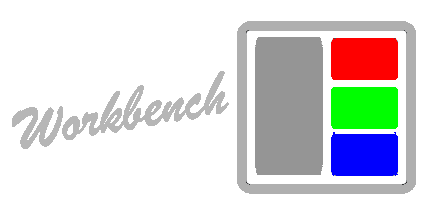Contributing
So you’ve got an awesome idea to throw into Workbench. Great! Please keep the following in mind:
- If you’re creating a small fix or patch to an existing feature, just a simple test will do. Please stay in the confines of the current test suite.
- If it’s a brand new feature, make sure to create a new feature and appropriate
tests. Also, whipping up some documentation in your fork’s
gh-pages branchwould be appreciated. - If your contribution changes any Workbench behavior, make sure to update the
documentation. It lives in both the source code and the
gh-pages branch. If the docs are missing information, please feel free to add it in. Great docs make a great project! - Please do your best to submit small pull requests. The easier the proposed change is to review, the more likely it will be merged.
- When submitting a pull request, please make judicious use of the pull request body. A description of what changes were made, the motivations behind the changes and any tasks completed or left to complete will also speed up review time.
Contributions will not be accepted without tests
If you’re creating a small fix or patch to an existing feature, just a simple test will do.
Test Dependencies
To run the test suite and build the Workbench you’ll need to install Workbench’s
dependencies. Workbench uses npm, so a quick run of the npm install command and
you’re all set!
$ npm installBefore you start, run the tests and make sure that they pass (to confirm your environment is configured properly):
$ grunt testWorkflow
Here’s the most direct way to get your work merged into the project:
- Fork the project.
- Clone down your fork:
git clone git://github.com/<username>/Workbench.git- Create a topic branch to contain your change:
git checkout -b my_awesome_feature- Hack away, add tests. Not necessarily in that order.
- Make sure everything still passes by running
grunt test. - If necessary, rebase your commits into logical chunks, without errors.
- Push the branch up:
git push origin my_awesome_feature- Create a pull request against Workbench/Workbench:master and describe what your change does and the why you think it should be merged.
Updating Documentation
We want the Workbench documentation to be the best it can be. We’ve open-sourced our docs and we welcome any pull requests if you find it lacking.
You can find the documentation for Workbench in the
gh-pages branch directory of Workbench’s repository on GitHub.com.
All documentation pull requests should be directed at gh-pages. Pull
requests directed at another branch will not be accepted.
The Workbench wiki on GitHub can be freely updated without a pull request as all GitHub users have access.
Gotchas
- If you want to bump the dependency versions, please put that in a separate commit. This way, the maintainers can control when Workbench gets released.
- Try to keep your patch(es) based from the latest commit on Workbench/Workbench. The easier it is to apply your work, the less work the maintainers have to do, which is always a good thing.
- Please don’t tag your GitHub issue with [fix], [feature], etc. The maintainers actively read the issues and will label it once they come across it.
Let us know what could be better!
Both using and hacking on Workbench should be fun, simple, and easy, so if for some reason you find it’s a pain, please create an issue on GitHub describing your experience so we can make it better.
